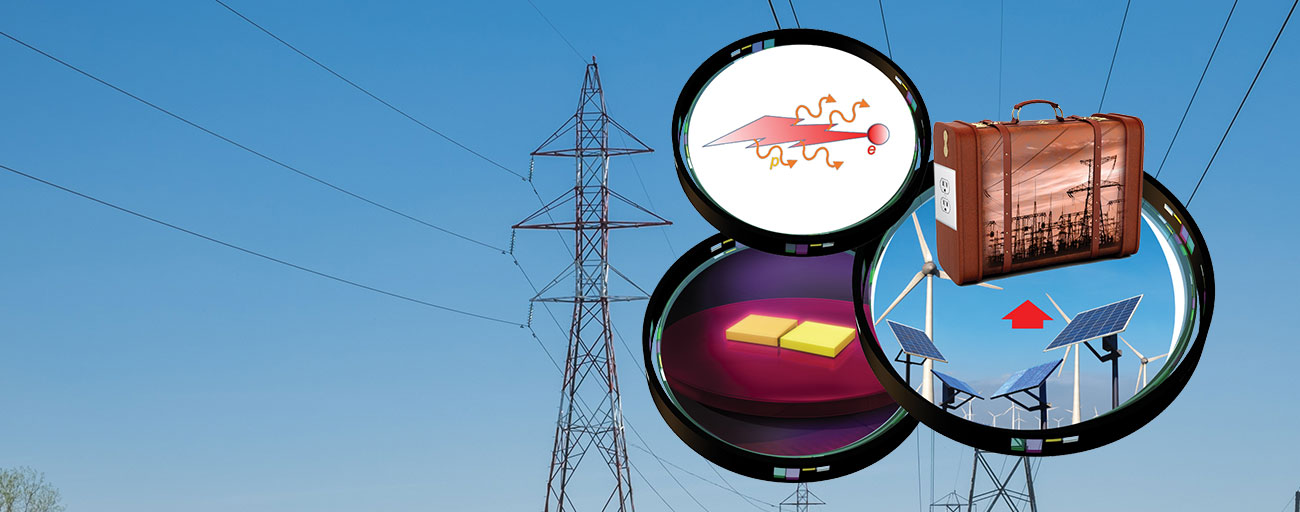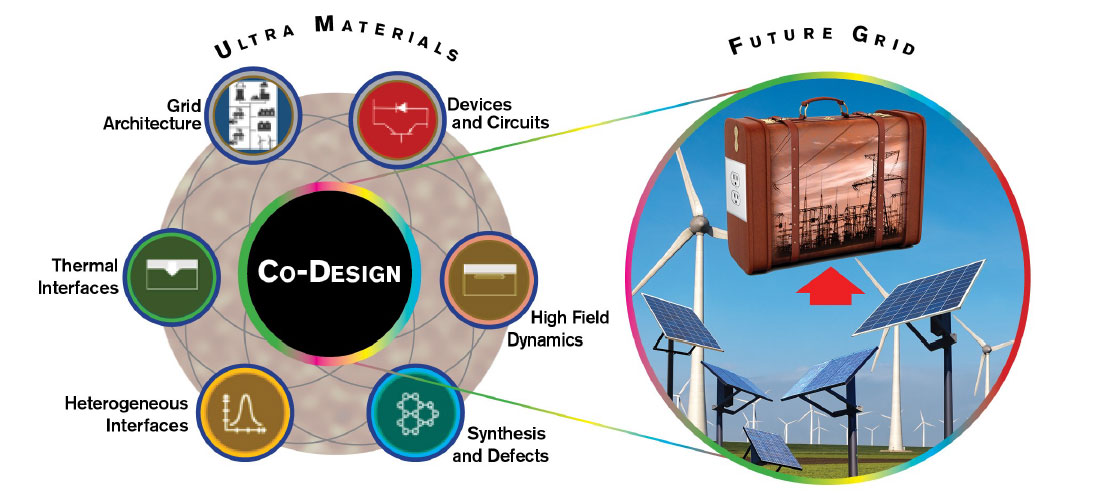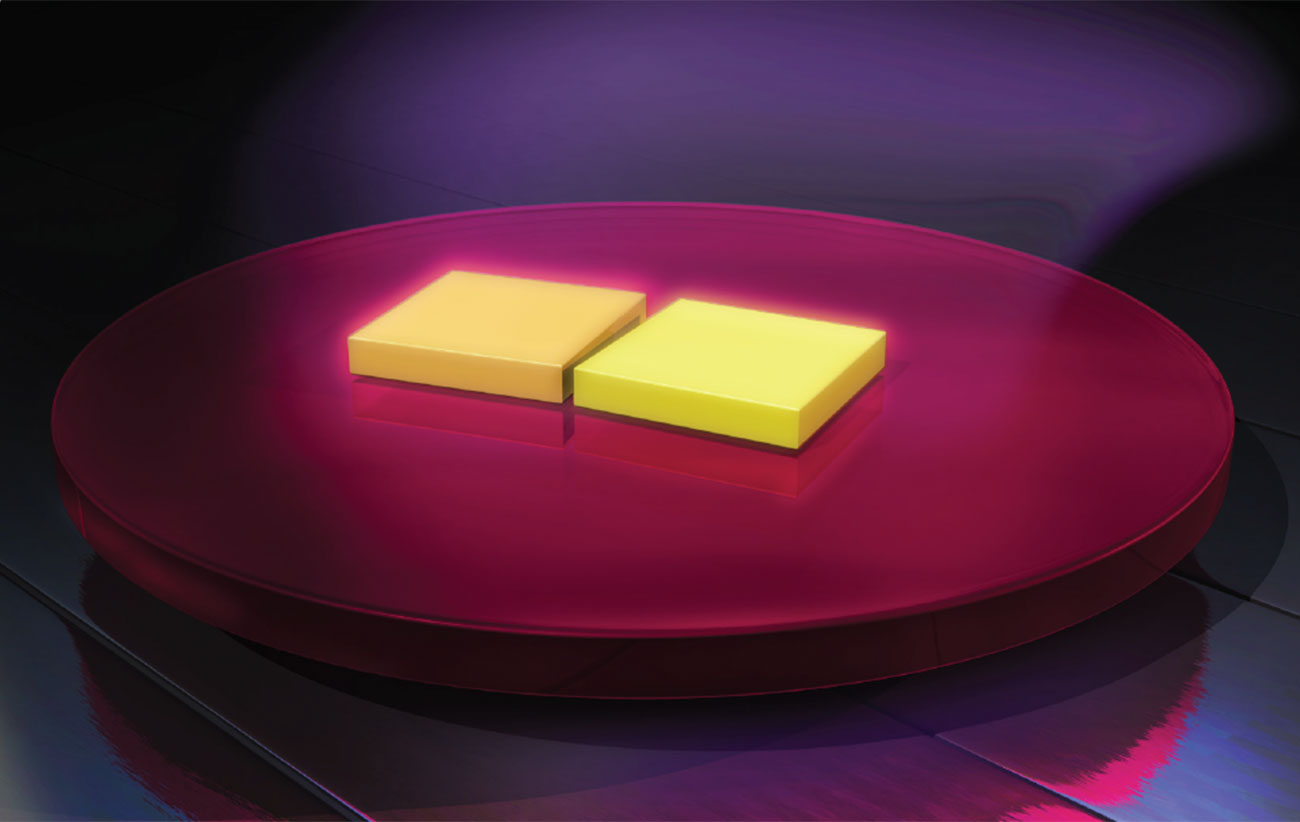
About ULTRA
A resilient, smart electricity grid is necessary to integrate multiple energy sources, power storage capabilities, and diverse electrical needs. The Report of the Office of Science Workshop on Basic Research Needs (BRN) for Microelectronics identified ultra-wide bandgap (UWBG) semiconductors as a crucial enabling materials technology to “reinvent the electricity grid”. UWBG semiconductor and dielectric materials (or “Ultra” materials) offer a new realm for high field transport, electron-phonon interactions, and heat transport but present a tremendous challenge for materials synthesis. Understanding how to grow these materials and take advantage of their novel properties is critical to enable efficient energy conversion and control. Significantly, realization of this work would result in a reduction in size where (according to the BRN report) a substation could be replaced by a suitcase sized power converter. Key challenges are to: (a) achieve high voltage semiconductors which reduce the number of components, (b) sustain a high current density to decrease the size of each component, (c) switch power at high frequency to achieve higher power conversion efficiency and also benefit from reduced dimensions of passive components (capacitors and inductors), and lastly (d) efficiently conduct the heat away.
Ultra EFRC will focus on basic science challenges in four thrust areas: (1) growth, defects and impurities, (2) heterogeneous interfaces, (3) carrier dynamics and high field transport, (4) thermal energy transport and interfaces. The UWBG semiconductors of interest include cubic diamond, hexagonal AlN and BxAl1-xN alloys, which bridge the two, and oxide and fluoride dielectrics.


Four basic science questions drive Ultra EFRC’s work: (1) How can we achieve breakdown fields greater than 10 MV/cm? (2) How can we achieve current densities greater than 100,000 A/cm2 [3] and conduct the heat away? (3) What new device configurations Figure 1. “Substation in a Suitcase” adapted from DOE Basic Research Needs for Microelectronics will enable efficient systems? (4) What electricity grid architecture will efficiently support the diverse needs of a fully electrified society? These four questions embrace the four research thrust areas and the co-design cross-cut theme identified in PRD 5 of the Microelectronics BRN.
Achieving the vision of a resilient, smart electricity grid is much more than a single task. Co-Design will set the stage for research in Ultra materials as well as work to overcome challenges in synthesis science, the science of interfaces, and carrier dynamics and thermal transport. All are truly interrelated and cannot advance one-at-a-time, without co-dependency. Bringing the future of a smart and resilient electricity grid, the Ultra EFRC assembles 16 experts from 7 leading research institutions and one DOE national lab, to build a knowledge-base that transcends UWBG semiconductors. Together, the team will build a materials and device co-design ecosystem to advance the future of UWBG for energy resiliency. The Ultra EFRC is the first extensive study of cubic-to-hexagonal UWBG semiconductors and their properties.